REI's newest distribution center is a model of sustainability
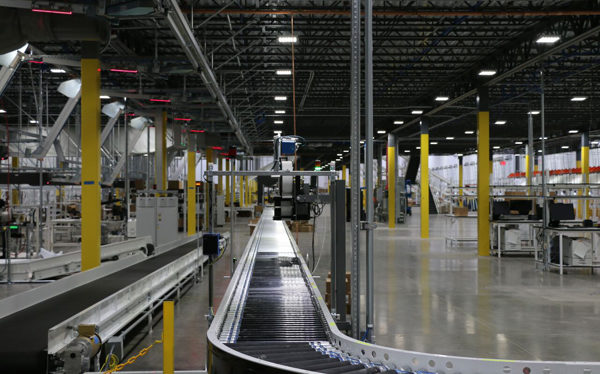
Given its stated commitment to environmental stewardship and green practices, it's probably no surprise that in designing its new DC, retail co-op Recreational Equipment Inc. went all out where sustainable design is concerned. Rather than just doing the easy stuff—say, throwing in some extra insulation and adding a bike rack—the co-op, better known as REI, designed an ecofriendly showplace that incorporates solar panels, recycling systems, and water conservation features both inside and outside the building.
The new facility, which opened in July, is located in the Phoenix suburb of Goodyear, Ariz., and complements REI's existing DCs in Sumner, Wash., and Bedford, Pa. It was designed using the U.S. Green Building Council's LEED (Leadership in Energy and Environmental Design) standards. REI hopes the project will earn a LEED Platinum certification, which is the top rating and one that's difficult for a distribution facility to achieve. At the very least, it believes the project will receive the next-highest rating, LEED Gold+.
To understand why REI approached the project the way it did, it helps to know a little about REI itself. Founded in 1938 by a group of 23 mountain climbing buddies, REI is a national outdoor retail co-op whose mission is to inspire, educate, and outfit members for a lifetime of outdoor adventures and stewardship. The co-op, which boasts 6 million members, operates 148 retail stores across the country and runs a healthy online business selling gear for hiking, climbing, cycling, snow sports, and the like. It is also heavily involved with organizations that promote environmental stewardship.
"Sustainable operations are part of REI's ethos," says Rick Bingle, the co-op's supply chain vice president. In order to stay true to the co-op's values, REI made choices aimed at limiting the DC's demands on natural resources, he adds. "The Goodyear facility was envisioned from day one to be sustainable."
To design the facility and the various energy-efficient systems it houses, REI sought input from both employee teams and outside experts. Bingle characterizes the endeavor as a truly collaborative process that didn't have the usual "handoff" from architect to building contractor. "Having everyone at the table allowed us to [achieve] a net-zero [energy] facility. It was very interactive," he says.
FUELED WITH SUNSHINEOne of the project's goals was to reduce the building's energy consumption. After all, energy is among the greatest expenses in a distribution center—particularly in Arizona, where it can cost a fortune to cool a large building. To power the 400,000-square-foot facility sustainably, REI installed 280,000 square feet of solar panels on its roof. As Bingle puts it, "We designed the building so that everything below the roof is powered by everything above."
The system is rated to produce 2.2 megawatts of electricity when the sun is shining—roughly the amount required to power 390 homes in Phoenix—though it actually produces slightly more. The solar panels have a return on investment of five years, but REI expects them to last 25 years, which would translate to about 20 years of free electricity at the facility.
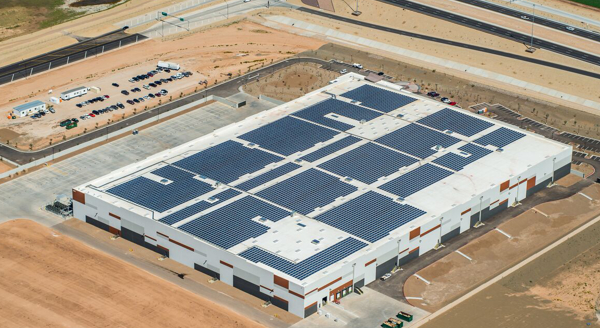
The solar array on the roof of REI's Goodyear, Ariz., DC produces more electricity than it consumes in a year. The design teams had calculated that four megawatts would be needed to power the building. When it became clear the solar panels wouldn't be able to generate that much electricity, the teams worked to get consumption below 2.2 megawatts.
REI's solar array produces more than it consumes in a year, making the building a "net-zero" energy facility. It uses the public electric grid as a "continuous battery" by sending power to the grid during the day and pulling it back at night. The city of Goodyear's power station is located adjacent to the facility—just a short cable connection away—which should help maximize facility uptime. Eventually, REI would like to store power onsite using banks of batteries.
The design teams originally calculated that four megawatts would be needed to power the building. But when it became clear that the solar panels wouldn't be able to generate that much electricity, the teams worked to reduce consumption wherever possible to get below the 2.2-megawatt threshold. "Everything done inside the building was designed to reduce electricity usage and heat creation," Bingle notes.
For example, a traditional facility of this size in a desert climate would need about 100 rooftop air conditioning units. On top of that, it would require a great deal of water—a valuable commodity in this region—to cool the units. REI's facility, by contrast, uses only four units cooled with a closed-water evaporative system. Not only does this minimize the amount of electricity required, but the closed system also saves over 1 million gallons of water each year versus comparable systems.
Further air conditioning savings were obtained by stirring the air within the building to reduce the temperature differential between floor and ceiling to just a few degrees. Plus, large fans were installed to exhaust the warmest air away from the ceiling and out of the building. "The air conditioning design makes it a lot more comfortable for our workers," says Bill Best, divisional vice president, supply chain operations.
The office area of the building was also engineered to create what the company calls "micro climates." Many of the offices are equipped with climate-controlled chairs, known as Hyperchairs, that incorporate individual fans and heating elements that allow workers to adjust their temperatures without affecting the rest of the office space. The chairs' temperature can be adjusted on control pads built into the chairs, or via Bluetooth and a smartphone app.
ECO-FRIENDLY MATERIAL HANDLING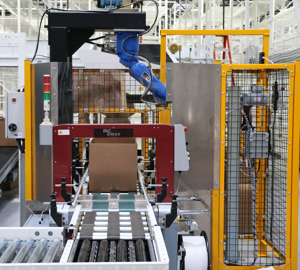
Using robotic equipment cuts down on the need for restrooms and other energy-consuming systems. The conveyors' motor-driven rollers shut off when there's nothing to convey.
As for the facility's handling systems, REI worked with its material handling systems integrator, W&H Systems (now DMW&H), and material handling equipment supplier Knapp to install productive, energy-sipping equipment. This included 24-volt conveyors with motor-driven rollers that shut off when no items are present to convey. Knapp supplied an efficient "pocket sorter" and an OSR Shuttle system. The pocket sorter stores products in bags that are sorted and delivered to workstations for processing.
The OSR Shuttle system provides REI with what the co-op calls "one-touch production" because it requires little interaction with the product other than loading it onto the conveyor and at goods-to-person workstations. This automated storage and picking system uses individually powered shuttles to store and retrieve totes of products. Shuttles and conveyors then work together to deliver products to automated picking stations.
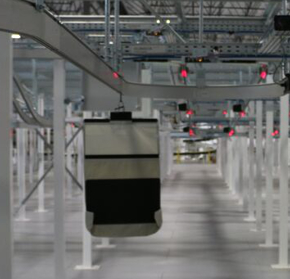
Pocket sorters deliver products in bags. Since the sorters, unlike people, don't need lighting to do their work, they help REI save electricity. Motion sensors turn the lights on when needed.
The goods-to-person stations are staffed by a small number of associates who can complete 4,000 unit picks per hour, compared with about 500 units per hour in a manual environment. Holding down the headcount in the fulfillment operation has translated to less demand on the cooling system, restrooms, and other building systems. On top of that, the shuttle machines, unlike human workers, do not need lighting to carry out their work in the racks.
The LED lights that illuminate other parts of the building operate on occupancy motion sensors, so they shut off when no workers are present. In addition, skylights were strategically positioned over the main travel paths and over mezzanines to allow natural sunshine to brighten the work areas.
To further reduce its environmental impact, REI's Goodyear facility operates an extensive recycling program. There are individual streams for recycling plastic, paper, wood, and cardboard, Bingle says. In addition, paper plates and food products from the cafeteria are composted. Overall, some 97 percent of all materials are recycled, meaning that less than 3 percent of materials and waste is sent to landfills.
THIS IS A DESERT, AFTER ALLIn a desert environment like Goodyear's, water may be the most precious resource. So it's no surprise that REI's new facility was built with an emphasis on water conservation. Besides choosing an air conditioning system that minimizes water consumption, REI took a number of other steps to conserve water wherever possible throughout the building. For instance, restrooms feature no-water urinals and low-flush toilets.
That thinking even carried through to the building's landscaping. Working in conjunction with the Phoenix Botanical Garden and other environmental groups, REI designed an outdoor space that's unusual for a logistics facility. It includes a walking trail that features native desert vegetation with the kinds of signage typically found in a botanical garden. The signs describe the plants, why they were chosen for the garden, and how they help the co-op meet its sustainability objectives.
"You will never see this at another warehouse. We made a choice to build a botanical garden for our employees and the community. It allows them to enjoy the outdoors," Bingle says.
REI chose vegetation that is drought-tolerant and requires little watering. An underground drip irrigation system provides what little water is needed. Underground irrigation is considered far more efficient than aboveground sprinkling systems, where water would quickly evaporate under the hot Southwestern sun.
Employees are encouraged to use the walking trail and to eat in the garden when weather permits. In addition, the facility's cafeteria has large glass garage doors that look out onto the garden. On pleasant days, the doors are rolled up to turn the inside and outside areas into one large seating facility.
REI believes part of its corporate mission is to educate others on sustainable practices. It shares insights with other distribution operations on how a facility can be made both highly productive and environmentally friendly. For Bingle and his team, creating a sustainable distribution process and sharing it with others is just a natural extension of the cooperative's mission in providing quality outdoor products. "Our approach is, we want to bring people into the learning experience of what we have created in this sustainable building," he says.
A version of this article appears in our September 2016 print edition under the title "The great indoors."
Related Articles
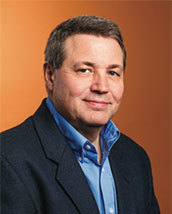
Copyright ©2024. All Rights ReservedDesign, CMS, Hosting & Web Development :: ePublishing